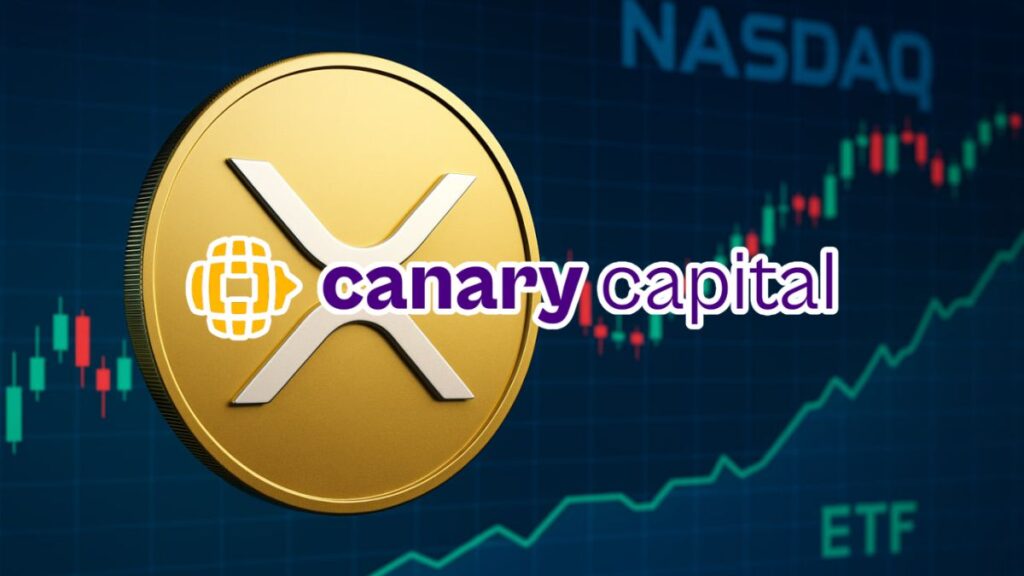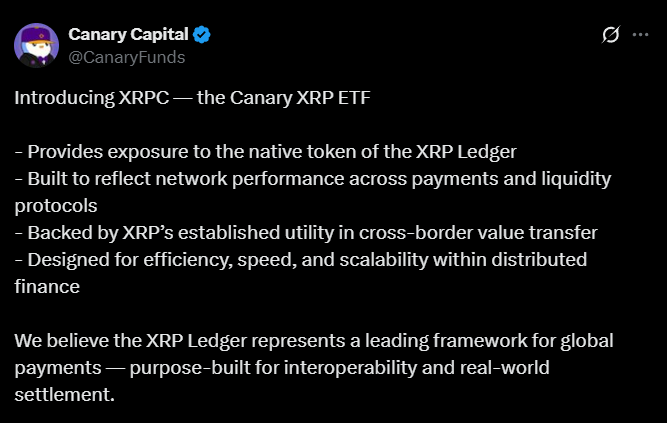TL;DR
- Canary Capital launched the first spot XRP ETF on Nasdaq, providing regulated exposure to Ripple’s native token.
- The fund opened at $40 and traded around $26.30, giving institutional investors access to the token without holding assets or using exchanges.
- The firm highlighted the efficiency of the XRP Ledger and its role in global payments, positioning the ETF as a bridge between blockchain and traditional finance.
The first spot XRP ETF debuted today on Wall Street, marking a structural shift in the relationship between traditional markets and the crypto industry. The fund, launched by Canary Capital under the ticker XRPC, began trading on Nasdaq and offers regulated exposure to Ripple’s native token.
The ETF opened at $40 and stabilized around $26.30 in its first hours of trading. It provides institutional investors with direct access to token performance without needing to use exchanges or manage custody of the assets. Canary explained that the product was designed for investors seeking exposure to the network’s real-world utility, focused on international payments and liquidity provision.
XRPL: Moving Capital as Easily as Sending an Email
The XRP Ledger has been operating since 2012, processing near-instant transactions with minimal energy consumption. Its infrastructure enables cross-border transfers and settlements, asset tokenization, and support for liquidity protocols. The firm emphasized that this architecture, designed to move value as easily as sending an email, underpins the asset’s longevity and stability.
The launch was interpreted as the start of a new phase of price discovery for XRP within formal regulatory frameworks. Analysts noted that the impact would not be immediate, but institutional inflows could gradually alter market dynamics. During the session, XRP traded near $2.47, with technical indicators showing a balance between buyers and sellers.
Canary described XRPC as a bridge between distributed finance and traditional infrastructure. The firm considers the token’s technical maturity and enterprise adoption to place it in a different category from the rest of the crypto market. Its strategy is based on the premise that assets with payment and settlement utility will lead the next phase of blockchain adoption.
The fund is not registered under the Investment Company Act of 1940 and therefore does not follow the requirements of traditional ETFs. Canary warns that investing in XRPC carries substantial risks, including volatility, liquidity constraints, and potential regulatory changes. Still, the ETF’s launch opens a new institutional channel for the Ripple ecosystem and redefines its role within the global financial system












